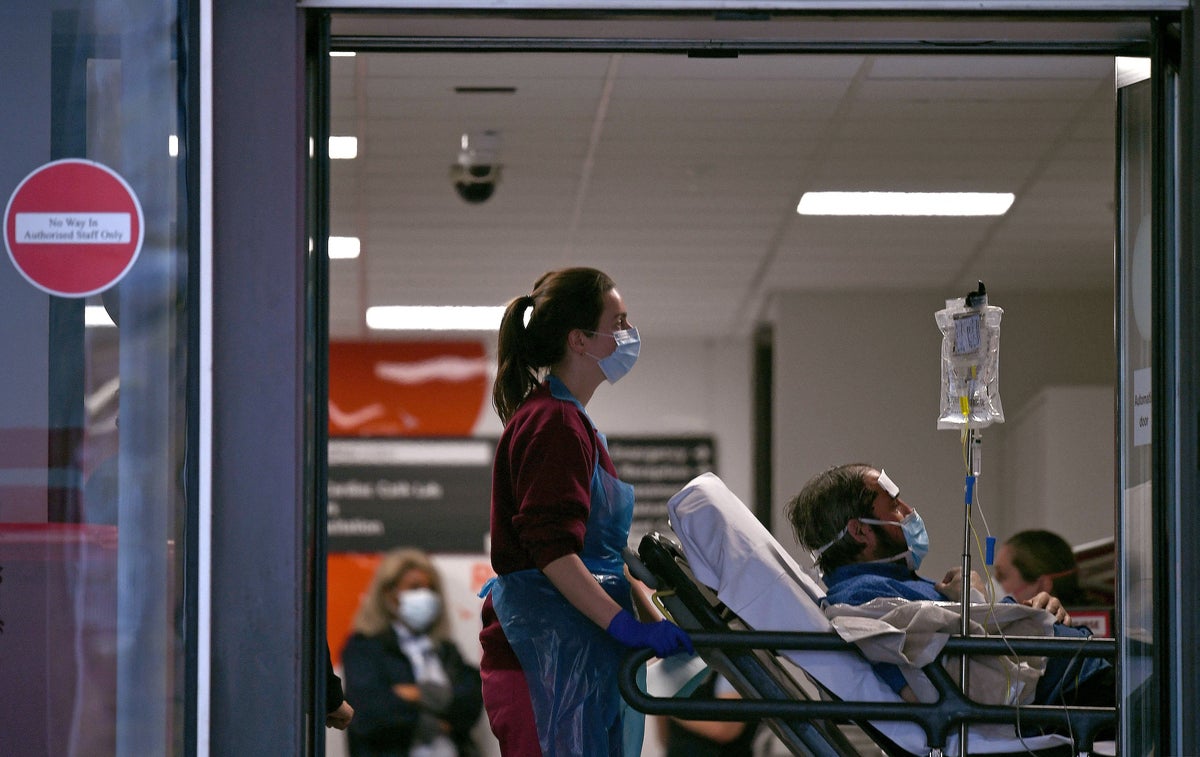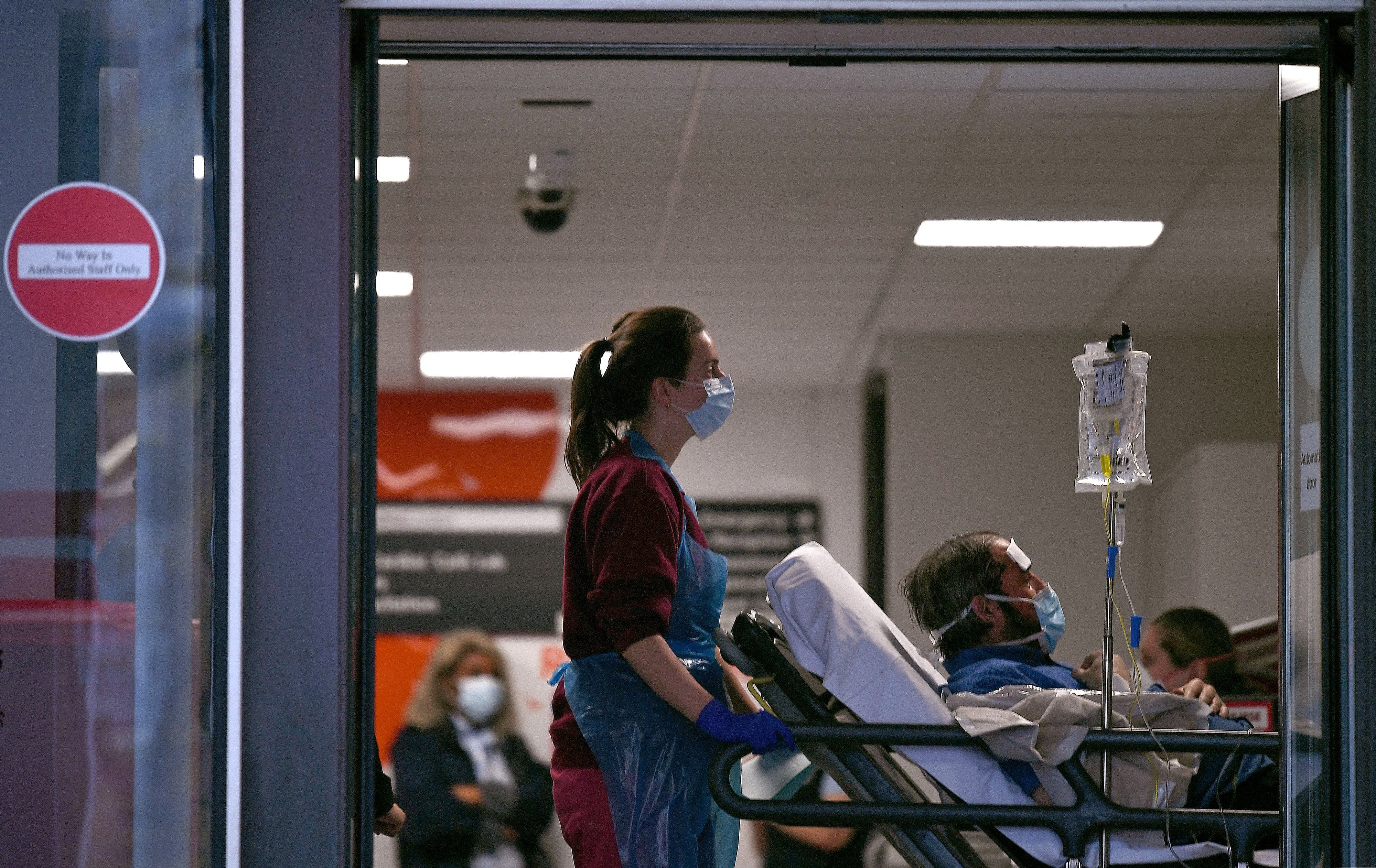
Coronavirus cases are continuing to rise in England, as the number of people entering hospital with Covid-19 soars by a third week-on-week just before Christmas.
One in 45 people are estimated to have had the virus in England in the week to 9 December, according to the most recent figures from the Office for National Statistics (ONS), published on Friday – up from one in 60 a fortnight earlier.
While trends are uncertain in Wales and Northern Ireland, there has been a similar rise in Scotland – where one in 40 are estimated to have had the virus in that period, having also been at one in 60 two weeks prior.

In England, infection rates rose and were highest in London, the South West, the West Midlands and the North East, according to the ONS, also increasing in the North East and South East.
Cases decreased in the east of England region, and were uncertain in the North West, Yorkshire and the Humber, and the East Midlands.
Infection rates were highest for those aged 25 to 34 years, and lowest for those aged 2 years to school Year 6, said the ONS, whose estimates are based on extrapolating the results of random testing across the country and are regarded as among the most accurate insights into the virus’s circulation in the UK.
The rate of patients admitted to English hospitals while infected increased to 9.56 people per 100,000 in the week to 18 December – which is the highest rate seen since October and is up from 5.45 at the start of the month.
While admissions to intensive care and high dependency units remained relatively low in most regions – at an average of 0.29 people per 100,000, also the highest since October – they were the highest they have been since April in the East Midlands, the ONS said.
According to the UK Health and Security Agency (UKHSA), hospital admissions of people with coronavirus soared by more than 36 per cent in the seven days to Monday, over which period 7,158 people entered hospital with the virus.
While Covid-19 is now implicated in more than 210,000 deaths in the UK since the pandemic began, the proportion of people falling seriously ill and dying with coronavirus has fallen considerably since vaccines were made widely available last year.
According to the most recent ONS figures, accounting for the week ending 9 December, there were eight deaths involving coronavirus – which accounted for just 2.8 per cent of all registered fatalities.

The UKHSA, which is responsible for testing data, said that in the week to Saturday, 508 people died within 28 days of a positive coronavirus test.
The health agency also provides more specific regional data on infection rates – however these figures are regarded as less accurate as they are based on the number of positive test results registered with the government, which many people have long ceased to do.
As of Saturday, the highest seven-day case rates were in East Devon – where 162 per 100,000 residents tested positive – in Copeland (144), and in Tendring, Torridge and North Somerset, all of which saw rates of 139 per 100,000.
This winter has also seen a sharp jump in flu cases, putting extra pressure on NHS staff already struggling to clear a record backlog of treatment, with several hospitals and eight of England’s 10 ambulance services declaring critical incidents earlier this week.
There has been a rise in hospital admissions “for both flu and Covid-19 as people continue to mix indoors this winter”, said Dr Mary Ramsay, the UKHSA’s director of public health programmes.
Hospital admissions for flu have “increased dramatically” among over-75s, and it is “important to avoid contact with other people if you are unwell, in order to help stop infections spreading over the Christmas and New Year period”, Dr Ramsay warned.







